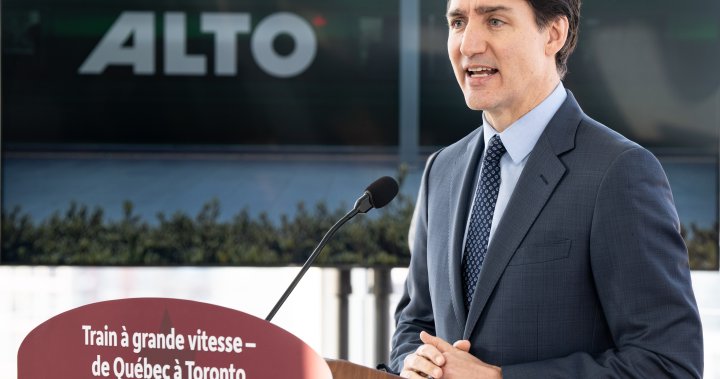Canada
Canada’s high-speed rail plan gets multi-billion-dollar boost

Canada’s High-Speed Rail Project Gains Momentum with Major Funding and Key Partnerships
Introduction: A New Era for Rail Travel in Canada
Canada’s ambitious plan for a high-speed rail network is gaining significant momentum, with a major funding boost and the selection of a prominent consortium to lead the project. On Wednesday, the federal government announced that a consortium named Cadence has been chosen to develop the high-speed rail link between Toronto and Quebec City, a project dubbed “Alto.” This initiative promises to revolutionize transportation in one of Canada’s most populated and economically vital regions. The new funding commitment of $3.9 billion over five years, combined with the expertise of Cadence, signals a major step forward in bringing high-speed rail to Canada.
A Consortium of Experts: Cadence Leading the Way
The Cadence consortium, which includes world-renowned companies like AtkinsRealis (formerly SNC-Lavalin) and Air Canada, has been selected for its extensive experience in designing, developing, and operating large-scale transportation infrastructure. This partnership brings together a wealth of knowledge and resources, ensuring that the project is both ambitious and feasible. Cadence will be responsible for co-designing, building, financing, operating, and maintaining the rail network, making it a comprehensive public-private partnership. The consortium’s involvement is a testament to the government’s commitment to collaborating with industry leaders to deliver a state-of-the-art transportation system.
Funding and Investment: A Significant Financial Commitment
The federal government has earmarked $3.9 billion for the latest phase of the high-speed rail project, which is in addition to the $371.8 million allocated in the 2024 budget. This substantial investment underscores the government’s confidence in the project’s potential to transform Canada’s transportation landscape. Transport Minister Anita Anand emphasized that the funding will be used prudently, with a focus on reliability and minimizing risks during the five-year co-development phase. The financial commitment also reflects the government’s long-term vision for a modern, efficient transportation network that aligns Canada with other G7 nations, many of which already have high-speed rail systems in place.
Project Phases: From Planning to Reality
The development of the high-speed rail network is divided into three key stages. The first stage, which is already underway, involves procuring the trains. The procurement process was launched in 2022, and Cadence was selected from three consortia that submitted bids. The second phase will focus on designing the track, route alignment, station placements, and obtaining the necessary regulatory approvals and consultations with Indigenous communities. These preliminary steps are crucial for ensuring that the project is both environmentally sustainable and socially responsible. The final phase will involve the actual construction and operation of the rail network, with the goal of completing the project in a timely and efficient manner.
Economic and Social Impact: A Game Changer for Canada
The high-speed rail project is expected to have a profound impact on Canada’s economy and society. The Toronto to Quebec City corridor is home to nearly half of Canada’s population, making it a critical region for economic development. The existing transportation network has struggled to keep pace with the region’s rapid growth, leading to congestion on highways and delays on current rail services. By introducing a high-speed rail network, the government aims to slash travel times by half, offering a faster and more reliable alternative for passengers. Prime Minister Justin Trudeau highlighted that the project will be a “game changer” for Canadians, reducing the travel time between Toronto and Montreal to just three hours.
Conclusion: A Bold Step Forward for Canada
The announcement of the high-speed rail project marks a significant milestone in Canada’s transportation history. With the financial backing of the federal government and the expertise of the Cadence consortium, the project is now one step closer to becoming a reality. Transport Minister Anita Anand emphasized that the government will be prudent with taxpayer dollars, ensuring that the project is both reliable and successful. Martin Imbleau, the president of Alto, echoed this sentiment, stating that high-speed rail is not a luxury but a necessity for Canada’s future. As the project moves forward, Canadians can look forward to a faster, cleaner, and more efficient way to travel, bridging the gap between key cities and unlocking new opportunities for economic growth and connectivity.











